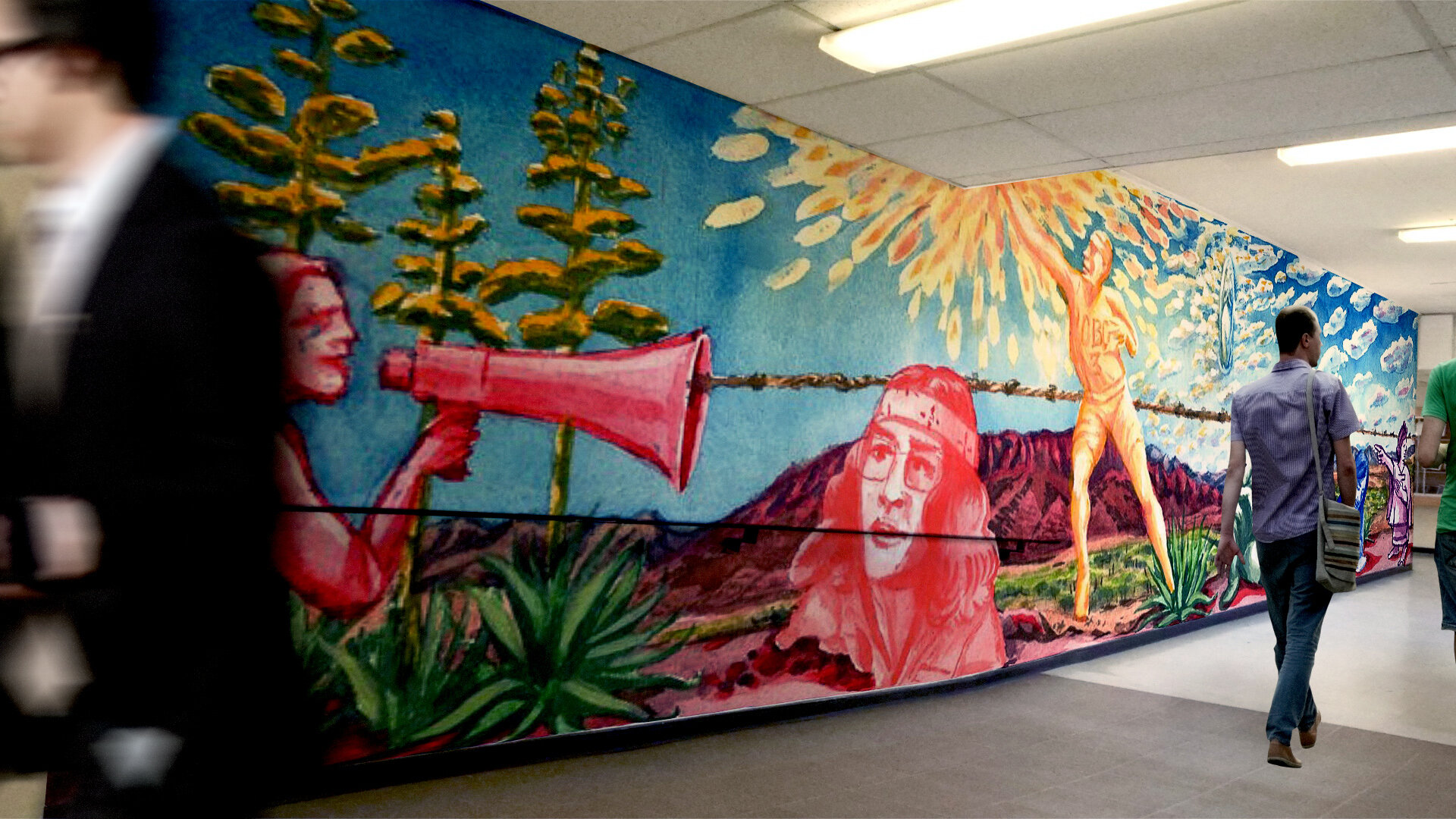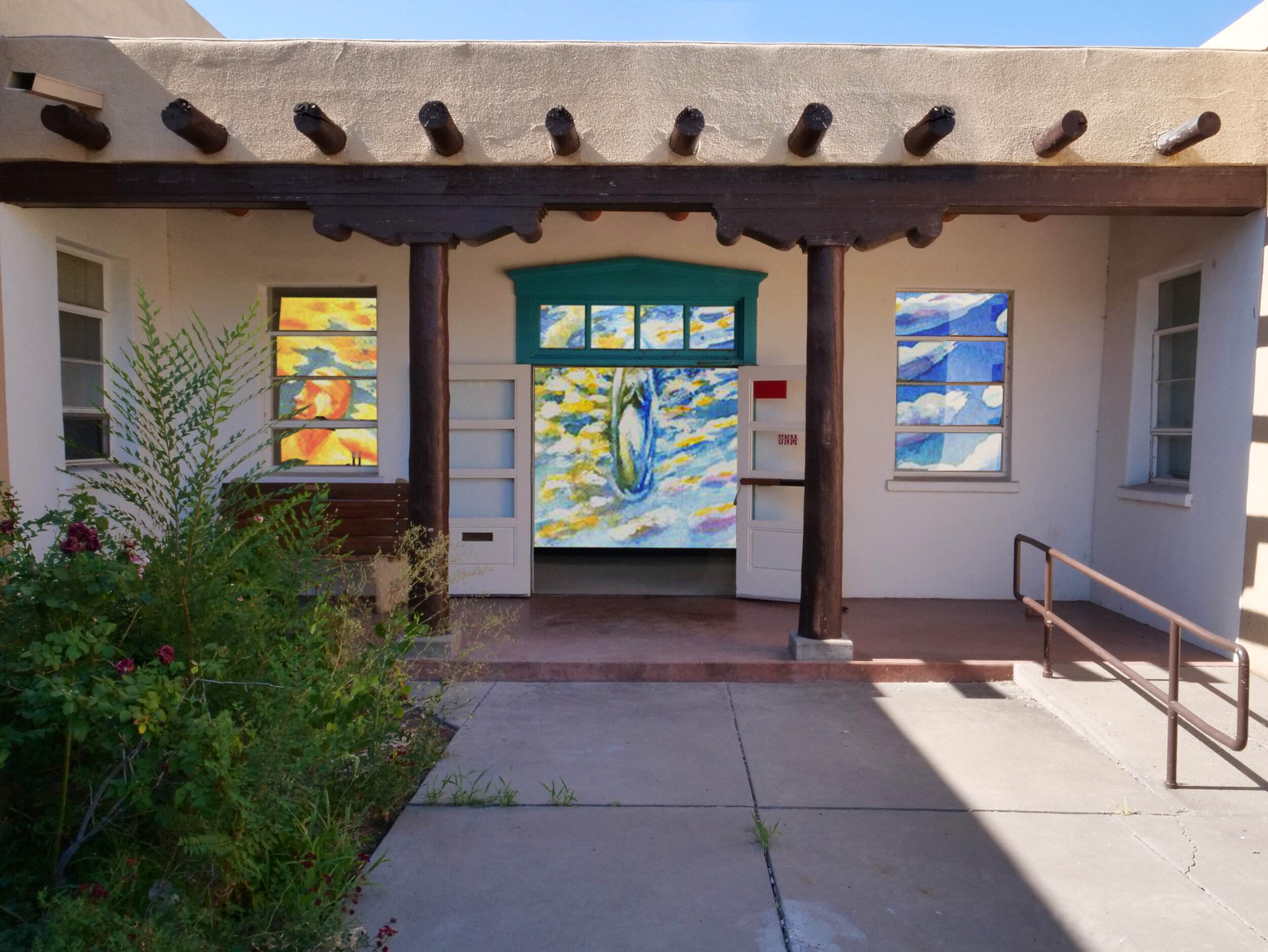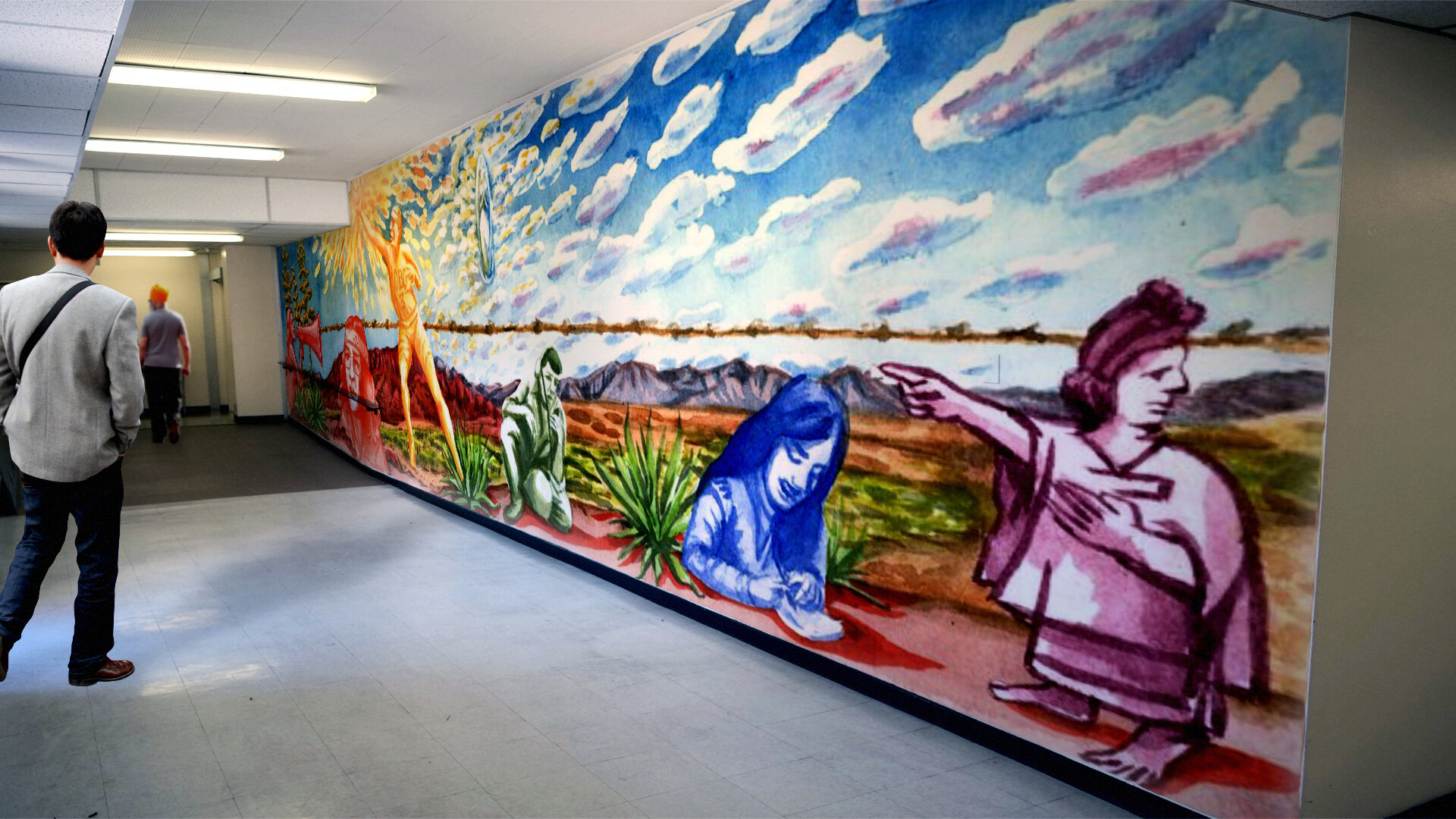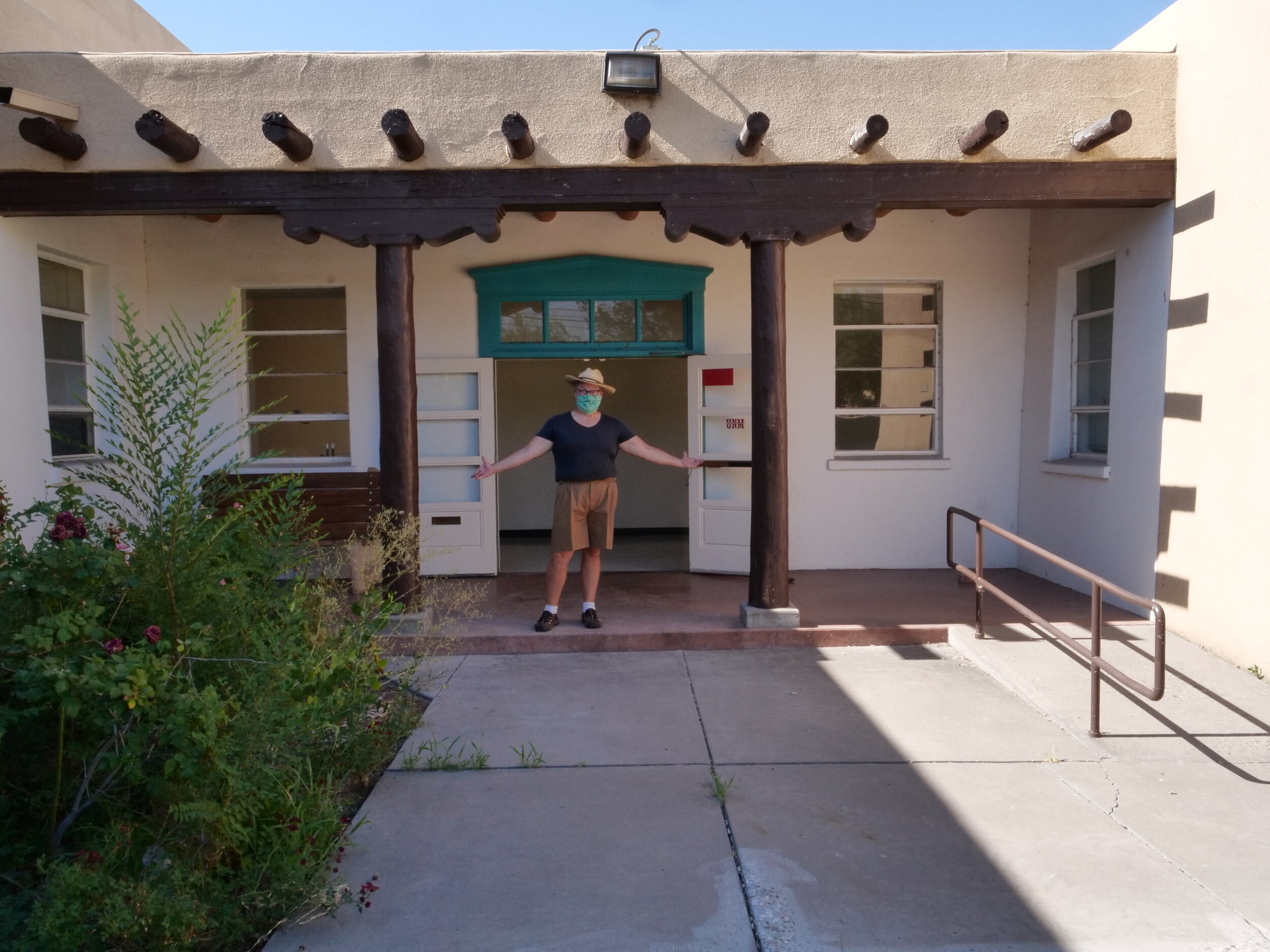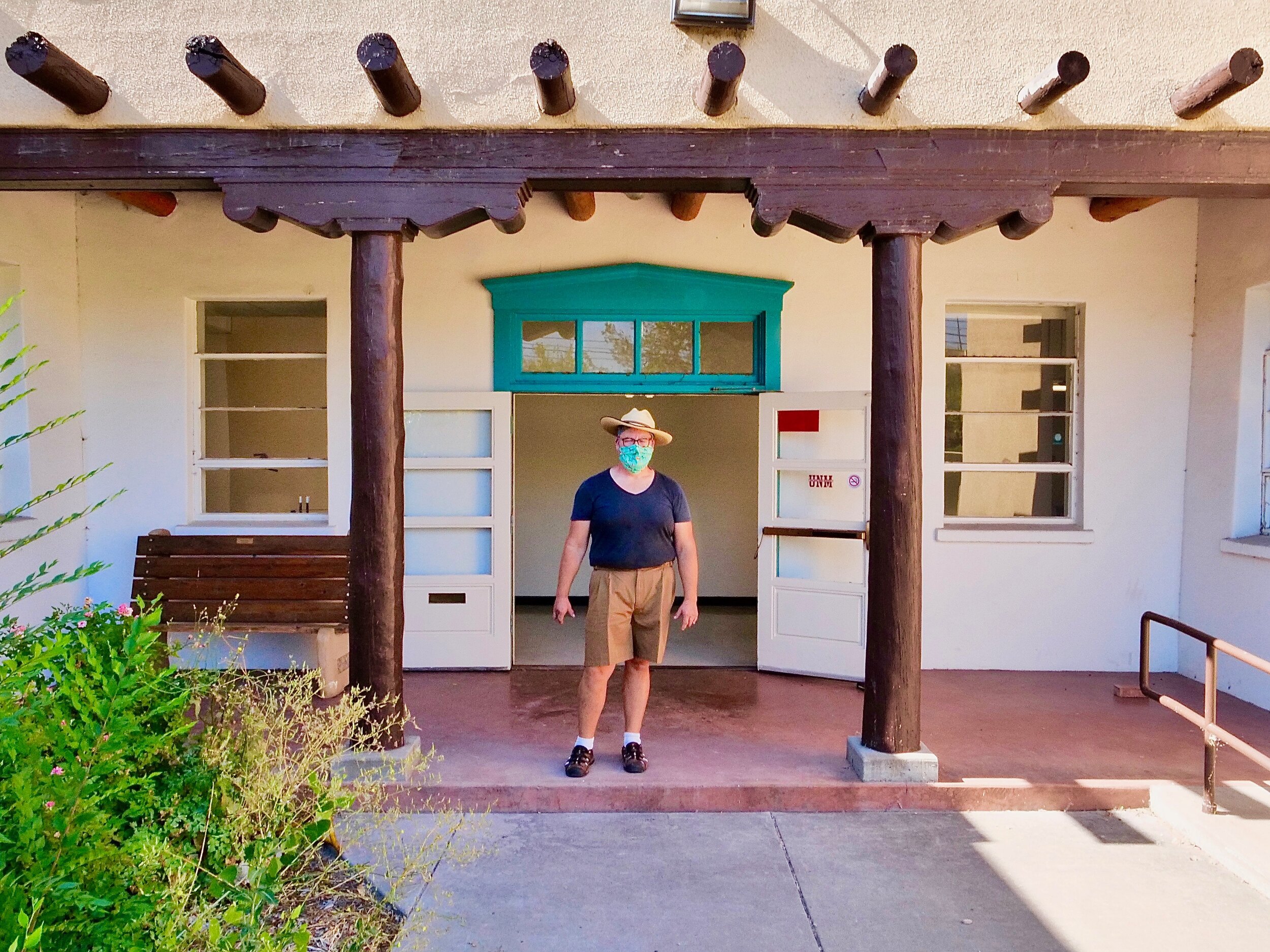This summer, as I have prepared to begin painting Can You Hear IT?, the world and my painting have come closer together.
I originally conceived of this project in the conviction that Indigenous New Mexicans hold the ground on which the University of New Mexico resides. I wanted any creation of mine built into UNM’s architecture to reflect that fact. August 10, 2020 will mark the 340th anniversary of the beginning of the Pueblo Resistance War (AKA the Pueblo Revolt), and will be the day that I begin this project. IT (Indigenous Technology) enabled Puebloan People to expel the Spanish and cleanse (at least temporarily) their lands of invaders. It has continued to enable diverse New Mexicans to resist layers of re-invasion and colonization. Now it can guide us towards decolonization. By embracing IT can we New Mexicans, and the University of New Mexico, move forward together and live into our promise as a learning community in this place..
Po’pay and the other Puebloan People who rose up against the Spanish in 1680 did not want to share the Upper Rio Grande Valley and its great riches and wealth with the Spanish. They communed with a return to the the time before the coming of the brutal and exploitative colonizer. I cannot blame them, and I salute their resistance and brilliance. That is why the center line of the mural is the maguey rope, the information technology that enabled many dispersed pueblos to rise up together united. This was and remains a great achievement, as I tell my students. That genius, on par with the many forms of IT which have supported all of us over these past months (and which will make the university viable this coming semester) would be enough to build a mural around and to celebrate.
But Po’Pay’s Indigenous Technology offers all of us another valuable lesson. The rope was just the symbol of his need — our need — for communal action. I and my assistant, artist Kathryn Villeneuve, will paint the mural. It’s hard to see the details of such a large canvas on a small computer screen, but we will stamp thousands of little network symbols to compose each figure in the mural and then connect them with thousands of lines. The ideas is to create a web of individuals utterances, communications, messages, ideas, that make up the aggregate, a whole. Each figure should be a cloud of connection.
I knew about Indigenous Technology before this project. My historical scholarship looks for the ways that Indigenous People have found to resist colonization. I have learned much more here at UNM from my students. The rewards of teaching at a Minority Serving university have been to teach me to be a better communicator, and open up to new technologies, new ways of testing, dialoging, and teaching: all of the possibilities of a new era in pedagogy. I thank my students for their brilliance and wisdom in helping me along my way of decolonization.
I knew very little about information technology before this project. As I sat with UNM IT’s employees and leadership, and listened to their hopes for what information technology could do for UNM and New Mexico, I thought they were impossibly utopian and idealistic. Yet, over this past several months, COVID-19 has brought me (and us) closer to how they are envisioning the future world. At the same time, the organizing and resistance work Black Lives Matter has been doing since 2016 nationally, as well as other organizations here in New Mexico, has come to righteous and fiery fruition these past weeks in nationwide and local protests against outrageous injustice.
These are dark times, but ones full of hope and promise. I bring this shaky hope to the making of this new work, one which will be on the UNM campus to preside over positive growth in our learning community, our city, and state for many years to come. I dedicate it to the future we must somehow create together to cohabit peacefully on this continent.
Digital renderings of the mural (thanks to alexroessner.com), Can You Hear IT?, oil on marouflaged canvas, 126” x 475”, 2020, UNM IT Building, UNM Campus, Albuquerque, New Mexico
